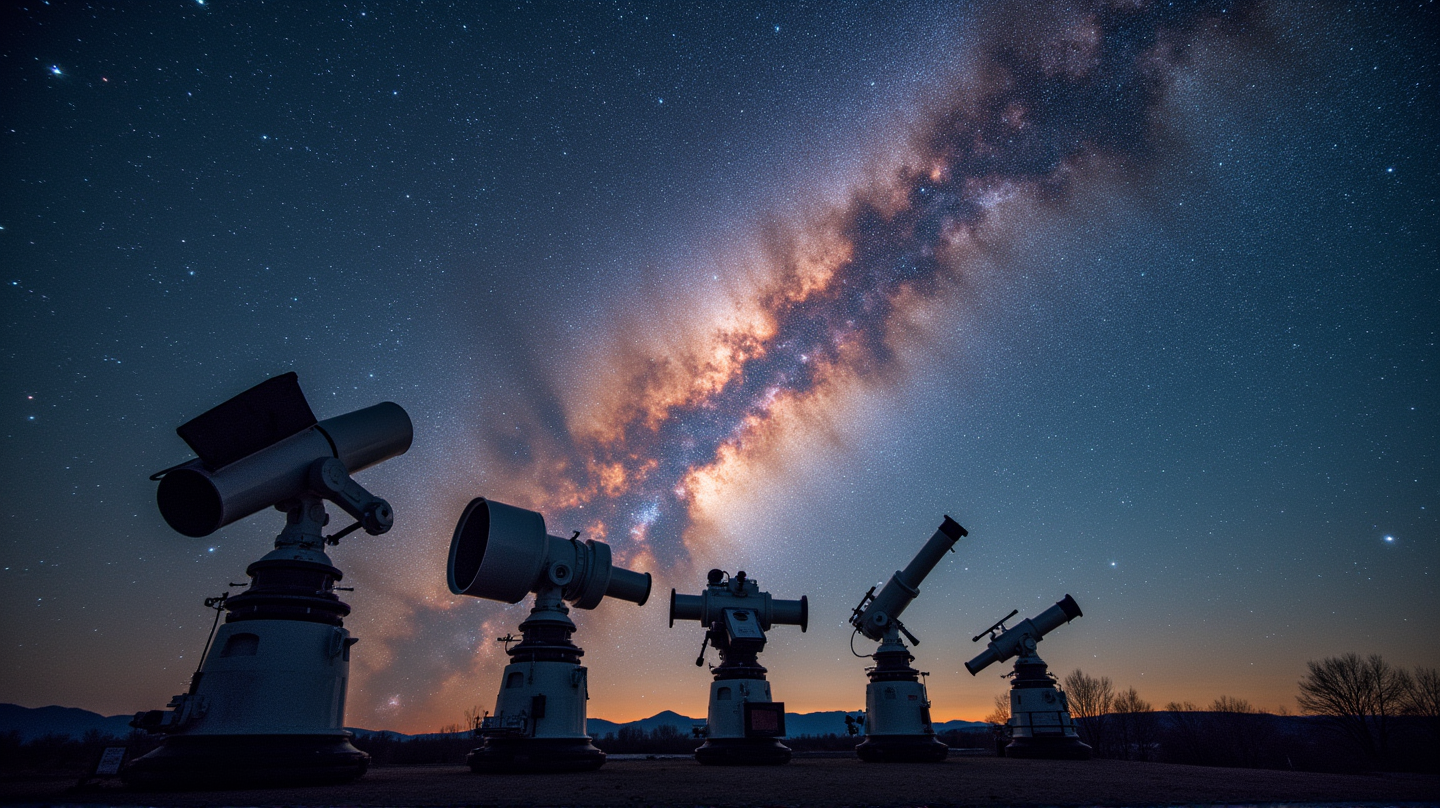Exploring the Cosmos: The 10 Most Powerful Telescopes Shaping Astronomy Today
Discover the telescopes like JWST and FAST that are revolutionizing our understanding of the universe with unprecedented precision.

In the infinite dance of starlight and space, today’s most powerful telescopes become our eyes, unraveling mysteries that the universe has savored for billions of years. As technology extends our reach into the cosmos, these magnificent instruments are not just tools; they are harbingers of new cosmic tales. According to Times of India, these telescopes stand as pillars of discovery in astronomy.
1. James Webb Space Telescope (JWST)
Guardian of the infrared universe, JWST peers through cosmic time, unraveling secrets of galaxies that witnessed the birth of stars. Just sit back and think about it: a telescope so sensitive it can capture the whispers of ancient starlight, 1.5 million kilometers away.
2. Five-hundred-meter Aperture Spherical Telescope (FAST)
Listening intently to the cosmic whispers, FAST stands gigantic in its natural throne in China’s Guizhou. This single-dish radio telescope tunes into the radio symphony of the universe, capturing pulsars and signals that may one day connect us to otherworldly neighbors.
3. Extremely Large Telescope (ELT)
Perched atop Chile’s Cerro Armazones, the ELT is destined to delve into the enigmatic realms of dark matter and black holes. With a mirror meticulous in its design, it will reveal images 15 times sharper than the famed Hubble, promising insights that challenge our understanding of existence.
4. Giant Magellan Telescope (GMT)
The GMT, crafted in Chile’s embrace, harmonizes the light of seven mirrors to peer into the universe’s grand show. With unparalleled clarity, it’s not just capturing images; it’s crafting possibilities for Earth-like planets and unveiling the secrets of accelerated cosmic expansion.
5. Thirty Meter Telescope (TMT)
Although awaiting its mountaintop sanctuary on Mauna Kea, Hawaii, the TMT promises to be an unparalleled eye in the sky, optimized for near-infrared and optical glimpses of the universe’s marvels.
6. Gran Telescopio Canarias (GTC)
Basking in the Canarian sky, GTC’s powerful gaze examines dark energy and supernovae from its lofty vantage point. This optical giant reveals the universe’s grandeur with clarity unmarred by human illumination.
7. Atacama Large Millimeter/submillimeter Array (ALMA)
In the heart of Chile’s Atacama Desert, ALMA’s antennas gather delicate whispers from the coldest corners of space. It is here that stars and planets emerge in the shadow of timeless gas clouds.
8. Gemini Observatory (North & South)
Twin giants of Gemini—one in Hawaii, the other in Chile—embrace the skies, capturing everything from gamma-ray bursts to the gentle cradle of new stars. Together, they give us a panoramic view of our cosmic neighborhood.
9. Chandra X-ray Observatory
Since its launch in 1999, Chandra’s precision has revealed enigmatic X-ray worlds, mapping the warmth of stars dying and the ominous embrace of black holes.
10. Magdalena Ridge Observatory Interferometer (MROI)
In New Mexico, MROI uses the magic of interferometry, combining smaller mirrors to achieve the clarity of behemoths, all to capture nuances in star systems and nascent worlds.
The Essential Luminaries of Astronomical Innovation
Each of these telescopes is a beacon of infinite possibilities. They open windows to the multi-layered tapestry of space, where light from bygone eras transcends time to greet us. Technologies like adaptive optics bring far-flung galaxies into breathtaking focus, redefining mankind’s celestial reconnaissance.
India’s Expanding Astronomical Horizon
In the spirit of cosmic exploration, India embarks on its own stellar journey. MACE and DOT showcase Indian prowess, contributing significantly to the tapestry of global astronomy.
As we look up, these telescopes don’t just capture light; they foster dreams, dreams of a universe where every star tells a story, a universe that we are only beginning to understand.

